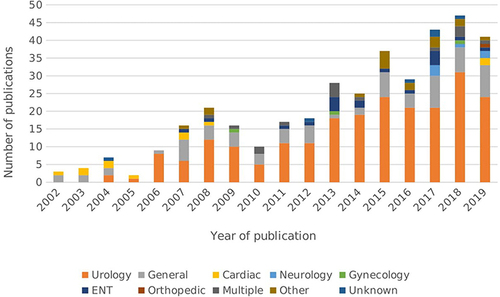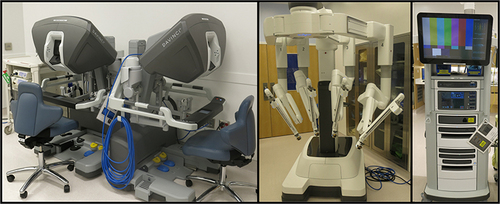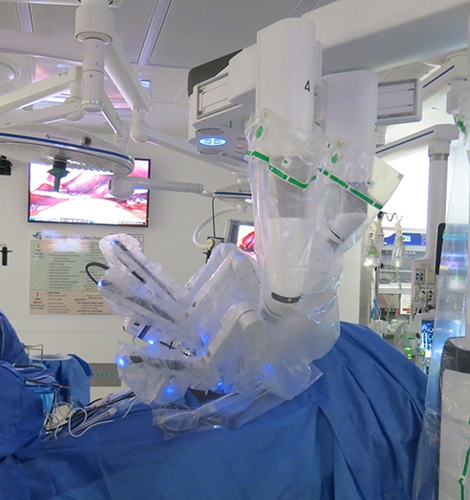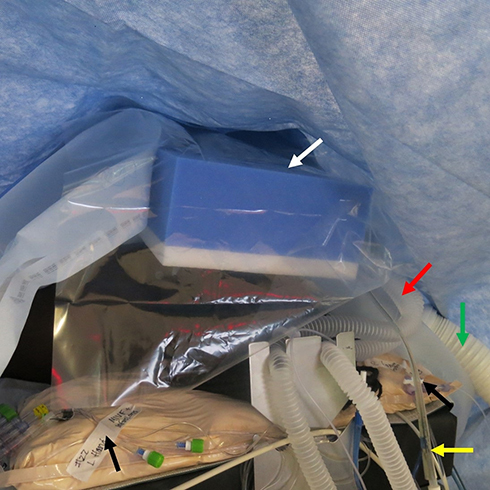Figures & data
Table 1 Applications of Robotic-Assisted Surgery in the Pediatric Population
Figure 1 The number of published manuscripts related to pediatric robotic-assisted surgery over the past 18 years. Each column represents the number of papers published in that year, increasing from 3 in 2002 to more than 40 in the 2019. PubMed was searched using the terms “robotic assisted surgery”, “pediatric”, “anesthesia”, “anesthetic”, “complication” between 2002 and 2019. Abstracts were screened and animal or adult studies as well as publications written in languages other than English were excluded. Reference lists of published articles were also examined and added if applicable. “Multiple” includes multiple procedures such as urology and general surgery. Other includes articles focusing on instruments or surgeons learning curve on robotic surgery. Unknown includes article which did not have a specific procedure name on the abstract.

Figure 2 Components of the da Vinci robotic surgery system including the vision cart, patient cart, and surgeon console.

Table 2 Benefits and Limitations of Robotic-Assisted Surgery for Pediatric Patients
Figure 3 Intraoperative photograph with the robotic surgery system docked at the operating room table which is in reverse Trendelenburg position to facilitate surgical visualization of the abdominal contents. The patient’s head is to the right.

Figure 4 Intraoperative photograph showing the head of the bed. The patient’s head is covered with a foam pillow (white arrow) to prevent pressure from any of the surgical instruments or operating personnel. The anesthesia circuit (red arrow); orogastric tube (yellow arrow); Bair hugger tubing (green arrow); and peripheral intravenous infusions (black arrow) are labelled. The patient’s head is covered in plastic and an upper body Bair Hugger™ is placed to maintain normothermia.

Table 3 Modified ERAS Protocol for Robotic-Assisted Colorectal Surgery
